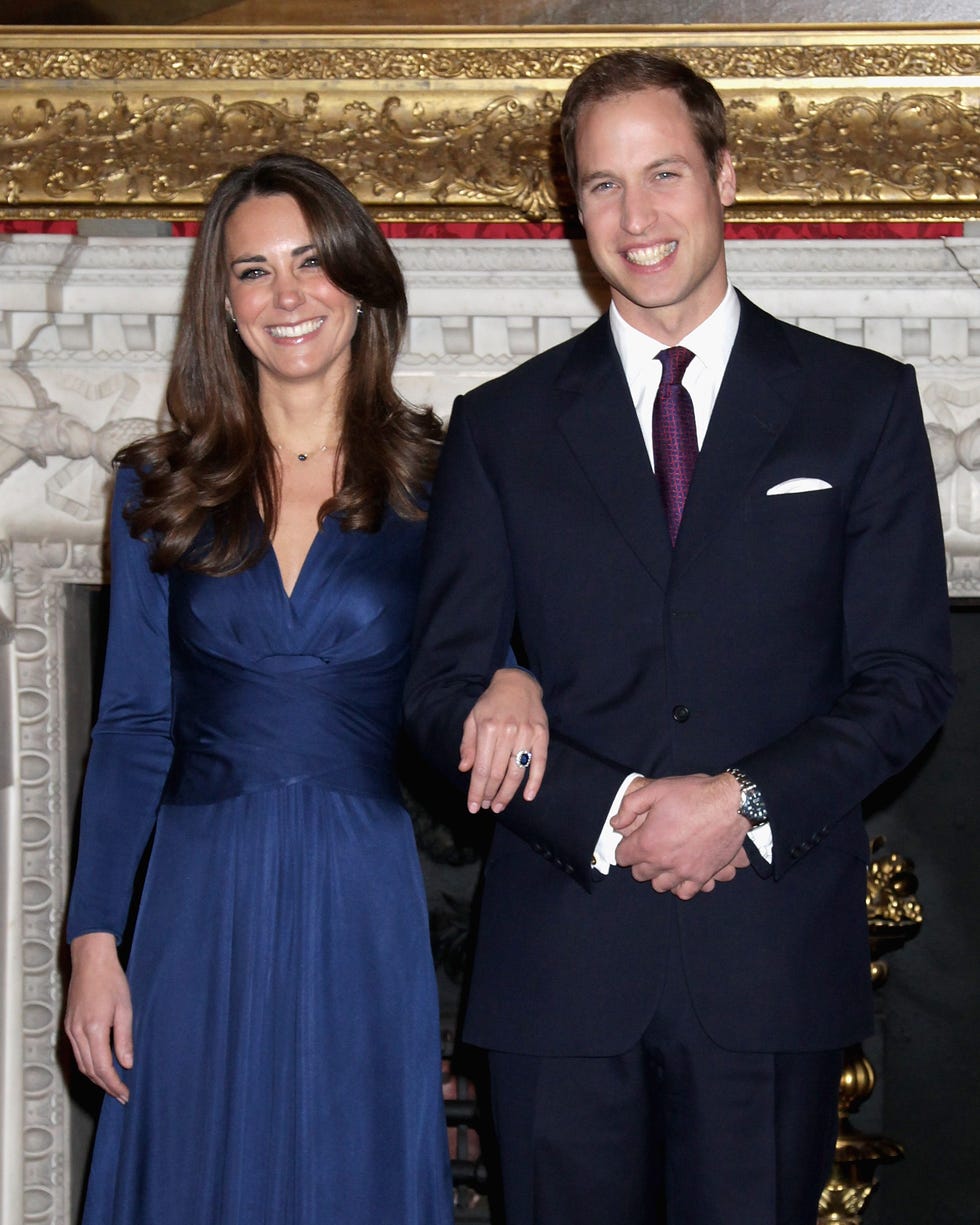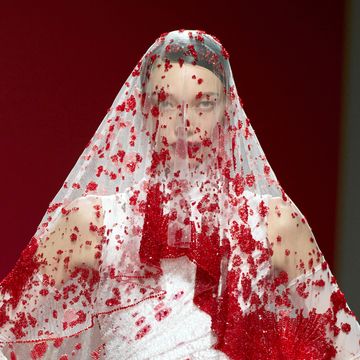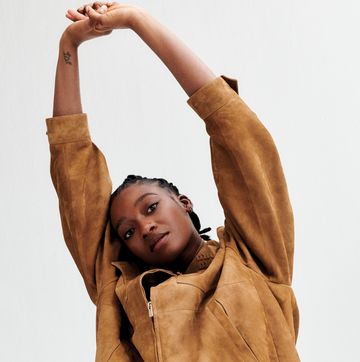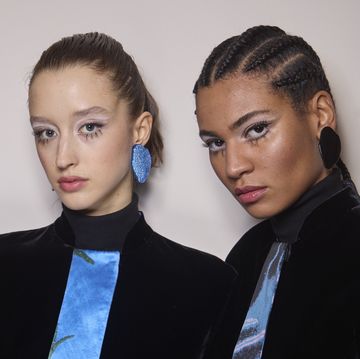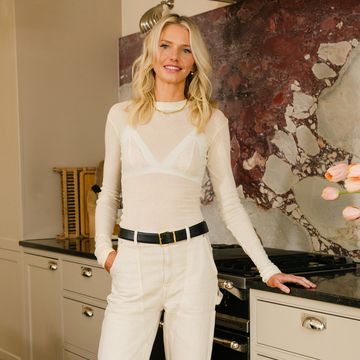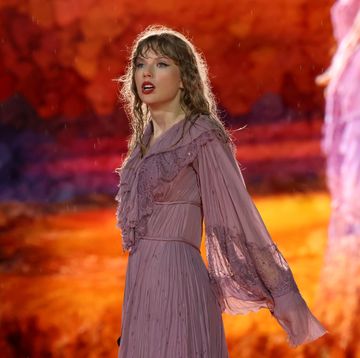Daisy* swirls the tip of her finger along the base of her gin glass, collecting the condensation with a sigh. The date, their second, is not a bad one; the man sitting opposite her is clever enough and certainly good-looking enough. He has a decent job, he owns a cat – and, crucially, hasn’t referred to himself as a ‘cat dad’, which would be an immediate red flag. But despite all of this, it’s not what she would describe as a ‘standout’ date.
In the two years she’s been single, Daisy, 34, has been on close to 100 first dates, figuring love was ultimately a numbers game. But, so far, each meeting has yielded similar results. ‘There’s no… spark,’ she says. ‘That thing where you get excited about someone. It just isn’t there.’
Daisy’s theory – that the probability of finding a good match comes down to meeting enough people – has become one of the most common arguments in favour of dating apps. And in the grip of the pandemic more of us than ever banked on the idea that swipes would equal sparks. (According to data from the end of 2020, the biggest apps – including Match and Bumble – grew by almost 20% in September and October.)
However, as one prominent Oxford University academic and relationship researcher Dr Anna Machin explains: ‘What we’re talking about when we say “spark” is the impact of neurochemical attraction, and apps rarely create the conditions necessary for that.’ In fact, the sheer number of available options may well be working against our biology, in the long term driving us into a neurological quagmire where we find it difficult to spark with anyone.
We find ourselves at a point in history where, in theory, it’s never been easier to find a partner – but it’s still as hard, if not harder, to locate what we really want: butterflies, a sense of excitement and possibility. The question is: how long will our demanding generation put up with that unsatisfying state of affairs?
With restrictions on physical meetings likely to continue – possibly for years, in one form or another – technology will undoubtedly remain at the heart of our search for love. And the search itself may well become more important than ever. Innumerable studies have linked close relationships to improved health and increased longevity and, conversely, have found that social isolation increases the risk of early death by an amount comparable to smoking 15 cigarettes a day. Luckily, we may well be on the cusp of a new dawn in the world of dating. With increasingly sophisticated algorithms and biotechnologies in development, is it just a matter of time before how often we spark, and with whom, is under our control?
In a 2020 article for The Atlantic, tech journalists Ashley Fetters and Kaitlyn Tiffany argued that 'the way people now shop online for goods – in virtual marketplaces, where they can easily filter out features they do and don’t want – has influenced the way people “shop” for partners, especially on dating apps, which often allow that same kind of filtering'.
Indeed, the digitisation of the singles market has expanded the dating pool to the point where some kind of filtering system is actively necessary. But the rise in what psychologists have called ‘relationshopping’ has had a profoundly disruptive effect on our biologically programmed ability to find a partner we click with.
On a neurological level, romantic love is governed by three interlinking brain systems: lust, attraction and attachment. The lust system, characterised predominantly by an uptick in testosterone and oestrogen, causes us to feel sexual desire and drives us to act on those feelings. Underpinned mainly by dopamine and serotonin, the attraction system then narrows our focus to partners who are more genetically appropriate for us. Finally, the attachment system (via hormones such as oxytocin and vasopressin) helps us to sustain connections long enough to couple up and perform parental duties, which – from a biological perspective – is the whole point.
But the criteria we use to filter matches online isn’t necessarily what will get our neurons firing IRL. Daisy finds herself gravitating towards the profiles of potential partners who work in a similar field to her (finance), and whose hobbies and interests complement her own (cycling, long-distance running). As Fetters and Tiffany go on to point out, though ‘romantic chemistry is volatile and hard to predict, it can crackle between two people with nothing in common and fail to materialise in what looks on paper like a perfect match'. Dr Machin puts this ‘crackle’ down to our brain’s ability to take in sensory information that we may not consciously be aware of (‘smell and pheromones, body language, speech patterns’), all of which engages our attraction system. ‘This has a number of effects,’ says Dr Machin. ‘But in the main, it motivates us to learn more about the other person, and rewards us when we do.’
On a one-off basis, meeting someone we think is perfect but who, for whatever reason, doesn’t deliver in person isn’t a huge problem. But, as Daisy found, the more times our expectations of a spark are unfulfilled, the more disillusioned and disappointed we become. As she said: ‘I try to give people who seem great a real chance, but ultimately you can’t force the connection, even if you really want there to be one. It can get really demoralising.’ That disappointment isn’t just painful in the moment. It can also have a long-lasting toxic effect on a person’s future chances of finding a spark.
In fact, according to one pioneering study into the neuroscience of disappointment by academics in Geneva, repeated disappointment rewires our brains to become more cautious, less trustful of people we don’t know and more likely to make impulsive self-protective decisions. The cycle of excitement and disappointment means we find ourselves increasingly neurologically closed off. Far from helping us along, the ‘numbers game’ approach – the relentless swipe-match-message-meet – may be responsible for disrupting our finely tuned internal love compass.
So can we break that negative feedback loop and give our biology a helping hand, so that old disappointments don’t discolour new experiences?
According to Dr Machin, it’s a question currently being asked by pharmaceutical companies. As she explains: ‘[Relationships] are a new research frontier. Drug interventions are on the horizon because we now know more than ever about what the neurochemicals in our brains can do in terms of supporting us to date, motivating us to find someone and then helping us to stick with them.’
Brian D Earp is the Associate Director of the Yale-Hastings Programme in Ethics and Health at Yale University and co-author of Love is the Drug: The Chemical Future of Our Relationships. ‘There’s no single love pill that spontaneously creates love, but there’s a whole range of substances that interact with the love systems,’ he says. ‘We need to start mapping out the territory to work out which kinds of drugs have effects on which systems, and what these effects look like. Right now, it’s all emerging information.’
The two classes of drugs he singles out as having a potential impact on who and how we love are selective serotonin reuptake inhibitors (SSRIs, ‘which are widely in use today [as antidepressants], and do have a relational impact that is so far unstudied’) and psychedelics (‘MDMA in particular’). Pointing to the rebirth of MDMA-assisted couples therapy (first available in the 1980s but banned when MDMA was made illegal), he describes the power of this compound – 3,4-Methylenedioxymethamphetamine – to ‘reignite a spark within existing relationships’.
Studies have found that MDMA prompts a huge upsurge in serotonin and oxytocin in the brain. It also quietens activity in the amygdala, the part of the brain that controls fear response. Though Earp points out that the brain’s attraction system in particular is not well understood, MDMA causes a release of exactly the neurochemicals responsible for the love state, while also introducing an element of plasticity (meaning malleability) – the exact condition necessary to break us out of negative thought patterns. ‘You get a heightened sense of empathy and a willingness to listen to others,’ he explains. ‘You’re essentially in a state where you’re more open to being affected by certain stimuli or personal encounters.’
The problem (alongside the illegality of taking Class A drugs) is that you may make decisions that, on rational reflection, don’t align with your wider goals. ‘This is why, at the moment, MDMA interventions are more effective and ethical in long-term relationships. If you’ve been with someone for long enough, you have a sense of your shared values and what you’ve built together. But people get into a mental rut, settling into certain patterns that could be negative or destructive. Or you lose the ability to see the person with fresh eyes. These are the sorts of situations that psychedelics such MDMA can help alleviate.’
The idea that you could buy a drug in a pharmacy to help you foster quicker connections with new people, rather than having to surreptitiously score MDMA, is not as far-fetched as it may sound. Reputable pharma firms are working on this very thing. Bright Minds Bio, a Toronto-based pharmaceutical company, has taken psychedelic research to a new level, becoming a pioneer in ‘creat[ing] new and modify[ing] existing molecules in order to reduce unwanted side effects and accentuate positive therapeutic properties’. One US-based researcher, who asked to remain anonymous, likened the old-style psychedelic drugs, MDMA among them, to the first-generation iPhone. ‘What’s being synthesised now is the iPhone 5,’ he says. ‘Unwanted side-effects are being ameliorated so outcomes are more predictable.’ In terms of love, he argues that pills making it easier for us to connect with new people may take time to become mainstream because ‘research is largely focused on finding solutions for debilitating problems’. But he does point out that the potential for profit makes ‘love aids’ a very attractive market. ‘And we’re closer than ever to ironing out “chemical kinks”.’
It’s not just biotechnologies that may soon intervene in our search for a spark. As of December 2020, even the Japanese government has started to pour funding into the development of more sophisticated matchmaking AI, a move it hopes will lead to more relationships, and therefore help to alleviate the country’s low birth rate.
But the dating apps of the future are likely to look very different to the ones currently available. Rashied Amini is a systems engineer at Nasa and founder of Nanaya, a new kind of love prediction algorithm. Echoing Daisy’s findings, Amini points out that one of the biggest challenges in the dating tech space is that, ‘when we put ourselves on an app, we have a set of expectations that are often disappointed. Each interaction layers on a new set of expectations and disappointments, until it becomes difficult to foster that spark within the contrived medium of the app.’
Nanaya’s mission is to perfect an algorithm that can come up with optimal matching. It all started when Amini’s then-girlfriend of two years felt she wanted to break up with him but didn’t know why. ‘She wanted to do a cost-benefit analysis of the relationship – those were her words,’ he says. ‘I’d been doing modelling like that for my work at Nasa. I was upset and wanted to focus my energies on something silly, so I built a prototype for a cost-benefit tool and we used it together.’ The relationship didn’t last but the algorithm proved to be more effective than Amini had imagined.
In its current iteration, Nanaya offers users a report to outline their chances of finding love (given as a prediction of how many more months they’re likely to remain single), the areas of one’s life in which to concentrate the search and the personality types that might best suit theirs. Based on a detailed questionnaire, asking some seemingly incongruous questions (such as, ‘Do you own a pet reptile?’), it creates a holistic profile of the user, then applies the learnings from data gathered from hundreds of thousands of other users to make its predictions.
Many have reported the algorithm’s predictions and advice to be eerily accurate. Its success has surprised even Amini. He says that it’ll be at least another year before its full capabilities are made public. ‘We’re not a dating app,’ he says. ‘We look at what we consider to be the core aspects of identity – part of that is demographics, the value set that you have as an individual, your lifestyle, as well as a basic personality profile.’ This, he hopes, will offer us a way out of the negative feedback loop we’ve found ourselves in.
Ultimately, all of these interventions are trying to answer questions that have been around since the ancient Greeks: what is love? Can it be defined and quantified? Do we all feel it in the same way? Can it be harnessed?
Arguably, our attempt to speed up the love process – to get those answers quicker than ever before – is what has landed us in this emotional rut in the first place. For Daisy, the obvious course of action is to step back from technology altogether – ‘Give fate a chance’, she laughs. But she’s likely in the minority. For a generation used to hyper speed and at-your-fingertips convenience, love in pill form and an algorithm for the perfect partner make absolute sense.
*Name has been changed.
This article appears in the May 2021 issue of ELLE UK.
Like this article? Sign up to our newsletter to get more articles like this delivered straight to your inbox.
In need of more inspiration, thoughtful journalism and at-home beauty tips? Subscribe to ELLE's print magazine today! SUBSCRIBE HERE





